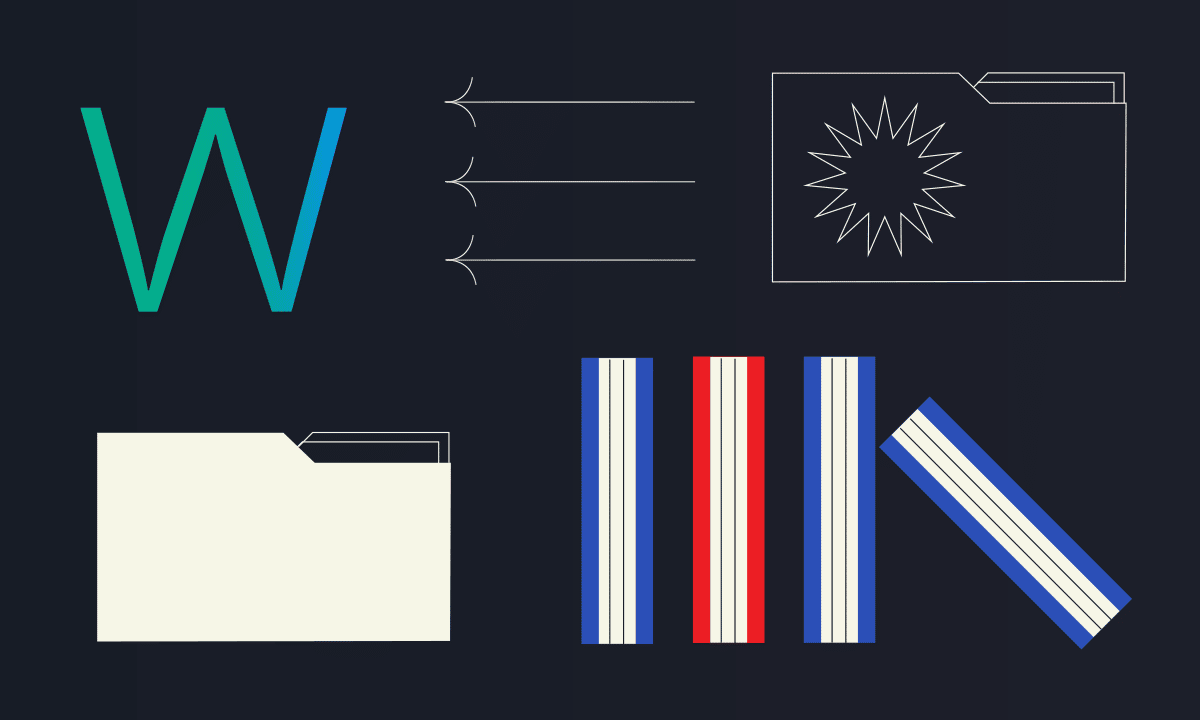Even in today’s modern economy, many businesses still rely heavily on documents and paperwork—from policies to contracts, to tax forms. For small businesses trying to organize all of these documents, document management systems can help. So what else can a DMS do?
In this post, we’ll explain what these systems are designed to do, where document management systems fit into the overall technology spectrum, and why document management software can be useful in some contexts.
What are document management systems?
Document management systems (DMS) are organized ways to help people keep track of and manage documents—often for compliance purposes. Document management system software is the tool of choice for this system because it includes features like workflows, versioning, document editing, disposal, and other document-specific capabilities.
Document management systems are commonly used by organizations that have relied on paper—like accounting firms—as a way to digitize and organize document storage and customer records.
What do document management systems do?
In general, document management systems help organizations stay compliant with regulations by not only storing documents—but creating a log of document-specific changes like edits, versions, and view histories.
Below are a few common features found in a document management system.
1Version control
Many document management systems now contain version control— a document management feature that allows users to auto-create or manually publish new versions. Version control ensures that everyone is working on the most up-to-date version of the document and helps prevent duplicate content.
2Check in/check out
Pretty self-explanatory, this feature of document management systems allows users to “check in” a document when they are working on it, and “check out” when they are finished. This ensures that only one user is working on a document at a time, preventing document corruption.
3Metadata
This is data about the document, such as the author, date created, and date modified. Many document management systems allow you to filter on metadata to quickly find documents.
4Search
Document management systems should include a simple search feature that allows you to find a document based on its content or metadata.
5Workflows
Document management systems can help you automate your document workflow, such as routing documents for approval or sending notifications when a document is updated.
Document management systems vs. content management systems
The difference between document management systems and content management systems is that document management systems focus on document-level management features like version control and check-in/check-out, while a content management system like WordPress contains features specific to the delivery of digital content.
A content management system (CMS) is designed to help users create, edit, and publish content online; a CMS may also contain some basic integrated document management features. You can find a CMS built into wide variety of applications like website platforms or CRMs.
Another key difference between the two: DMSs are typically used to manage internal documents, while CMSs are more commonly associated with external-facing content, like website content.
Document management is often an integrated feature of a content management or knowledge management system; as a standalone software app, document management software is often created to serve specific purpose—to help a company migrate from paper to digital, or for forensic or accounting applications.
Since documents are only one medium by which knowledge can be stored, enterprise knowledge management products (for example) don’t classify as document storage products. Some knowledge base vendors at the small business level may blur the document/knowledge management lines a bit more.
Document management vs knowledge management
Unlike document management, knowledge management involves managing and distributing all types of organizational knowledge, from documents, wikis, decision trees, and other content types.
Enterprise knowledge management platforms often include integrated document management features like version control—but KM platforms are designed to surface and manage all types of knowledge instead of one type.
Pros and cons of document management systems
There are many document management systems on the market, and each has its own set of features and benefits. Here are some of the pros and cons of using a document management system:
Pros
- Improved document security: With a document management system, you can control who has access to which documents and set permissions to ensure that only authorized users can view or edit sensitive documents.
- Increased document accuracy: A document management system can help reduce errors by ensuring that everyone is working on the most up-to-date version of the document.
- Version recovery and findability: Most document management systems include search features that allow you to find or recover documents based on its content or metadata.
- Reduced paper clutter: By electronically storing documents, document management systems can help you reduce the paper clutter in your office.
Cons
- Implementation and learning curve: Document management systems can be complex to implement and may require training for users to learn how to navigate the system.
- Cost: Document management systems can be expensive, especially if you need to purchase additional storage or licenses for users.
- Lack of expertise and support: Document management systems can be complex, and companies may lack the resources to keep them maintained
- Compatibility issues: Many solutions used for document management are outdated, not easy to integrate into modern software applications
What is a common document management solution on the market?
There are many document management system solutions on the market to know about, most of which are small or legacy solutions.
Since the history of document management software began as a way for companies to migrate away from paper, Microsoft SharePoint became a common solution for document management as document libraries, version control, and document check-in/check-out.
There are other similar dedicated document management software vendors on the market today, like M-files, or Rubex. Since many businesses encourage employees to share and interact with documents, companies often use KM products with document management features as opposed to dedicated DMS software.
Drawbacks of a knowledge management platform
The main drawback of DM software is flexibility; a DMS simply isn’t designed to handle newer content types like wikis, videos, decision trees, and others.
- Cost. DMSs can be expensive to implement and maintain. Licenses, hardware, and support costs can add up quickly.
- Complexity. Since they often require specialized training and knowledge to effectively manage and search for documents, DMS platforms can be complex to set up.
- Integration ability. DMSs may need to be integrated with other business systems, such as Customer Relationship Management (CRM) or Enterprise Resource Planning (ERP) software. This can add to the costs and complexity of implementing a DMS.
- Security. Access control is a common feature within DMS platforms. However, security measures can also make it difficult for authorized users to access documents when they need them.
- Flexibility. DMSs can be inflexible and difficult to customize. This can make it difficult to accommodate changing business needs over time.
- Reliability. To prevent data loss, you must regularly back up your DMS. It also requires regular maintenance and updates to keep them running smoothly.
- Scalability. DMSs can be difficult to scale up or down as business needs change. This can make them impractical for businesses that experience rapid growth or fluctuating demand.
- Support. DMSs often require specialized support and training. This can be costly and time-consuming for businesses to provide.
- Compatibility. Not all hardware and software systems are compatible with DMS platforms. This can limit the devices that can be used to access documents and the software that can be used to view or edit them.
- Usability. DMSs can be challenging for users to navigate and use effectively. This can lead to frustration and decreased productivity.
Overall, DMSs can be beneficial for many small businesses that deal exclusively with contracts and other version-sensitive documents. Be sure you carefully weigh the pros and cons of DMS before making a decision.
When to upgrade to a knowledge management platform
Although both knowledge management system software and document management system software share common features, knowledge management systems are generally a more effective solution to manage existing documents, files, and knowledge of all types.
You may want to consider a knowledge management platform if you need a more holistic approach to manage and surface documents (and other content) to employees or customers. To keep content up to date and reliable, a KM platform is built to receive feedback from others and offers more collaboration features than a DMS.
Instead of creating another content silo, ensure any document management software you purchase has a specific, well-defined purpose. These types of solutions are best used for specific use cases like document migration or compliance purposes. As always, follow knowledge management best practices!





